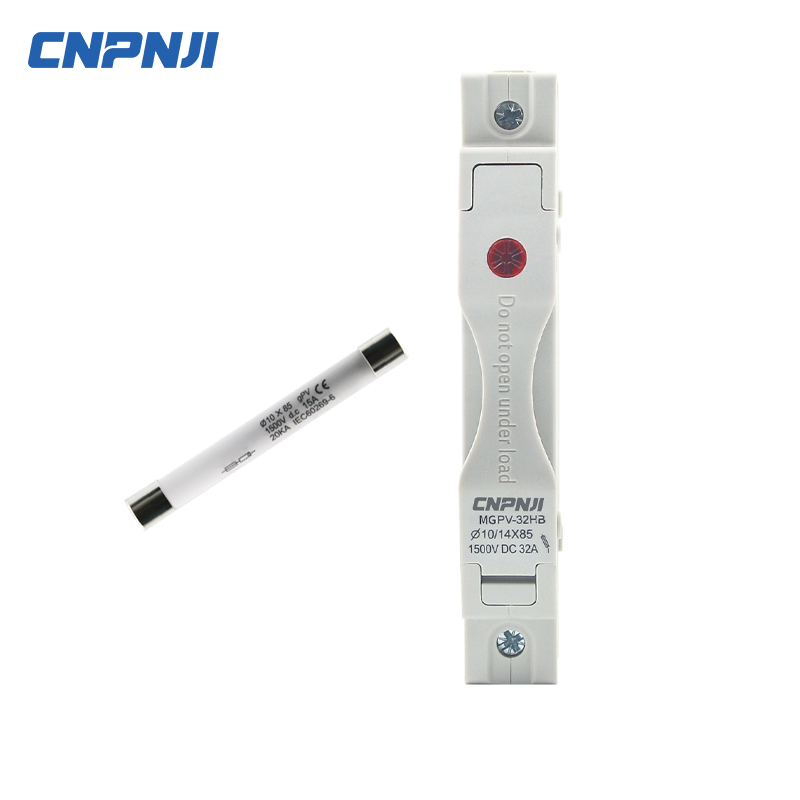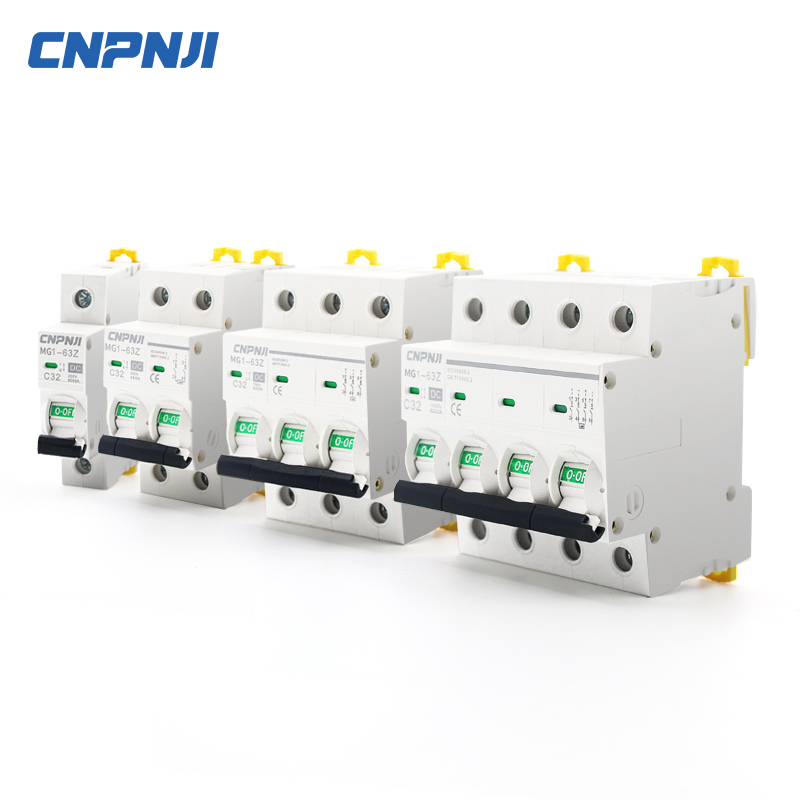The Difference Between DC fuse Holder and Miniature Circuit Breaker
The DC fuse holder is usually installed in the circuit and used in order to ensure the safety of the circuit during the operation of an important electrical component. DC fuses are protectors that can provide short-circuit protection, and are widely used in power distribution systems, control systems, etc. The fuse mainly plays a role in short-circuit protection and serious overload protection.

In general, DC miniature circuit breakers can be used to distribute electric energy or start asynchronous motors infrequently, and also to protect power lines and motors. If the DC circuit breaker encounters a serious overload, short circuit, or undervoltage fault during operation, it will automatically cut off the circuit. The function of the circuit breaker is similar to a combination of fuse switch and overheating relay.
The common point of DC fuse and mini circuit breaker: it can cut off the circuit smoothly when the circuit fails, so it can be said that both are circuit protection appliances, mainly used to protect the circuit breaker from overload and short circuit.
What is the Function of DC Fuse Holder and Mini Circuit Breaker?
The boundaries of DC mini circuit breakers are relatively fuzzy. The scope of use is generally divided into high-voltage circuit breakers and low-voltage circuit breakers. Generally, we usually call voltages above 3KV as high-voltage circuit breakers, and low-voltage circuit breakers are also called automatic switches. It is an electrical appliance that not only has a manual switch, but also has automatic protection devices for loss of voltage, undervoltage, overload and short-circuit. DC circuit breakers are also divided into universal circuit breakers and molded case circuit breakers. Generally, there is no need to change parts and components after the fault current is broken, and they have been widely used.
While the DC fuse holder is a current protector that protects electrical appliances through current. After the current exceeds a specified value for a certain period of time, the heat generated by the fuse itself promotes the melting of the melt, thereby breaking the circuit. DC fuses are generally widely used in low-voltage power distribution systems and control systems and electrical equipment. As short-circuit and over-current protection, they are one of the most commonly used protection devices.
Therefore, the DC circuit breaker can replace the fuse, as long as the rated operating current between the fuse and the circuit breaker is the same as the rated breaking current. But if the circuit breaker is used as a fuse, is it a little overkill?

What is the Difference Between DC fuse Holder and Mini Circuit Breaker?
The similarity between DC fuse holders and circuit breakers is that they can realize short-circuit protection. The principle of fuse is: using current to flow through the conductor will heat the conductor, after reaching the melting point of the conductor, the conductor will melt. Therefore, the circuit can be disconnected to protect electrical appliances and lines from being burned out. It is an accumulation of heat, so overload protection can also be realized, once the melt is burned, the melt must be replaced. When the electric load in the circuit is close to the load of the fuse used for a long time, the fuse will be heated gradually until it is fused. The fusing of fuse is the result of the joint action of current and time, which plays the role of protecting the line. It is disposable.
The DC circuit breaker can also realize the short circuit and overload protection of the line, but the principle is different. It realizes the circuit breaker protection through the current bottom magnetic effect (electromagnetic tripper), and realizes the overload protection through the thermal effect of the current. When the current in the circuit suddenly increases and exceeds the load of the circuit breaker, the circuit breaker will automatically open. It is a protection for increasing the instantaneous current of the circuit, such as when the leakage is large, short circuit, or the instantaneous current is large. After the cause is found out, it can be switched on and continue to be used.
Even if the functions and functions of the DC circuit breaker and the fuse are the same, there are still many differences, such as differences in protection methods, operating speeds, times of use, and working principles. The difference between a fuse and a circuit breaker is as follows:
1. The difference of the protection method: the DC fuse holder protection method adopts the fuse form. After the fault phenomenon is eliminated, the fuse needs to be replaced to restore the power supply, so it is more inconvenient to maintain. The protection method of the DC circuit breaker adopts the tripping form. After the fault is eliminated, the normal power supply can be restored only through the closing action, so the maintenance and restoration will be much more convenient than the fuse.
2. The difference in action speed: the fuse action speed of the DC fuse can reach the microsecond (μs) level, which means that its speed is much faster than that of the circuit breaker. This ability is usually more suitable for rapid cut-off requirements Installation and use under the circumstances. The tripping speed of the circuit breaker is in milliseconds (ms). It can be seen that it is much slower than the fuse, so it is only suitable for occasions where the cutting speed is not very high.
3. The difference in the number of times of use: the DC fuse must be replaced after the fault protection has been performed once and the melt has been blown, and the DC circuit breaker can be reused in most cases. However, from the perspective of the circuit breaking effect, the fuse will be stronger than the circuit breaker, and at the same time more thorough. Under normal circumstances, the circuit breaker is installed on the branch road, and the fuse is installed on the main road in most cases to play the role of secondary protection.
4. The difference in working principle: The working principle of the DC fuse is mainly based on the thermal effect of the current. When the current exceeds the fixed value (different fuse settings are also different), the internal fuse will blow to break the circuit and protect The equipment is not burnt out by high current. While there are many types of DC circuit breakers and their structural principles are also different. Usually, the trip coil excitation is caused by the excessive current to cause the circuit breaker to perform the tripping action. Of course, the circuit breaker can not only achieve automatic operation, but also Manually control the opening and closing actions of the circuit breaker.
In some special occasions, there are clear related mandatory regulations that must use DC fuses, such as elevator control protection, so DC circuit breakers cannot completely replace fuses. Moreover, the short-circuit time of the circuit breaker’s thyristor module is very short. In this case, the tripping speed of the circuit breaker can not meet the short-circuit requirements, so the fusing capacity of the fuse has also been recognized. The DC fuse has been widely used in building soft starter, frequency conversion and other distribution systems.
